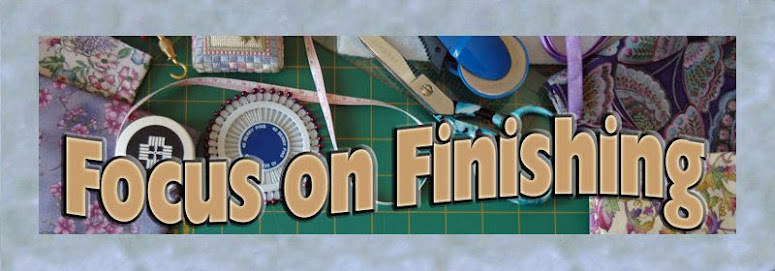All the pictures are clickable and shall lead you to a larger view.
You can see the list of materials needed here. The most important thing is having:
- a square design, with plenty of margin around
- an outer fabric of the same size (you can take any kind you want - cotton, silk, satin, brocade, whatever)
- some ribbon or cording to gather and tie the bourse (I chose narrow lace).
1. I'm going to start with a little tip I came up with to make sure you sew a perfectly, perfectly straight line all around the design. The tip was inspired to me by a technique in garment sewing (namely, pulling a thread near the edge of a fabric to determine the grain). We are going to pull a thread from the linen on each side of the stitched piece, right where the seam shall be.
For the first side, you'll just have to determine the seam allowance. It's your call - I like 1cm (3/8") for those small projects :) Once you have decided this, pick up the thread in the linen right on the line where you want the seam to be. I pick it up with a seam ripper, but small pointed scissor will work, too. Do be careful to pick up just this thread. Cut it and pull it out of the linen. You will end up with a small groove, which shall be your seamline :)
For the other sides, you'll first have to go back to the first side and to count the number of linen threads between the stitched design and the thread you just pulled out. Then, count the same number of threads on each side, and pull a linen thread on each side.
You will end up with this:

(Oops! The linen started fraying - but not enough to get me worried. Just handle it carefully - we'll be trimming it in no time anyway ;) )
Now we can really start sewing :)
2. Assemble the outer fabric and the stitched piece.
Pin them right sides together, with the stitched piece on top (since the groove we created in the linen will serve as a guideline)
Start sewing, starting not quite in the middle of a side. Whether you will be sewing by hand or by machine, all you have to do is sew right in the groove created by the pulled threads. Easy, non? :)
Go around the whole square, and stop 2-3 inches before the beginning of the seam. This will be the opening through which you'll turn the bourse inside out. (Do not start sewing in a corner. It will be much more of a pain to slipstitch a corner than a straight line, when you close the opening!)
3. Trim the seams close to the seamline (I do it with pinking shears so that the fabric and linen won't fray) and clip the corners. This will ensure crisp edges and corners when you turn the work inside out.
4. Turn your work inside out. Press it carefully (press, do not iron. Pressing ensures you do not distort the seamline and fabric).
Slipstitch the opening closed. (Slipstitching is explained and illustrated in the middle of this page.)
5. Creating the casings:
Fold the corners to the outside fabric to form isosceles triangles
Sew the corners down, stitching a line parallel to the folded edge. This creates the casing. Make sure your casing is wide enough to accommodate two widths of your ribbon/cording/narrow lace.
The stitching line is barely visible, which is a good thing :)
6. Insert ribbon into the casings. (I use a large knitter's sewing needle, but anything goes).
Once the first length of ribbon/cording is threaded through the casings, make a knot to close it. To determine the length, just make sure it lies flat around the (still open) bourse.
Starting from the other side, thread the second length of ribbon/cording through the casings.
All you need to do now is to pull the ribbons in order to gather up the edges and close the bourse.
Optional: You may sew a button to each corner of the bourse, if desired.
In my case I only sewed one button on to show you, but removed it afterwards. This particular bourse is small, and I felt the buttons would overload it.
Et voilà !
Now you have a cute little bourse, to give or to keep :)
I hope this was clear. If not, please feel free to ask any question by posting in the comments. Again, there is never anything such as a dumb question. Ask me how I know - I'm a teacher! ;)
Also, if you make a bourse, please post a picture to the blog for everyone to enjoy :)
Have fun everyone! Happy bourse-ing ;)
Tutor = Isabelle




















1 comment:
Wonderful! Thank you so much!
Post a Comment